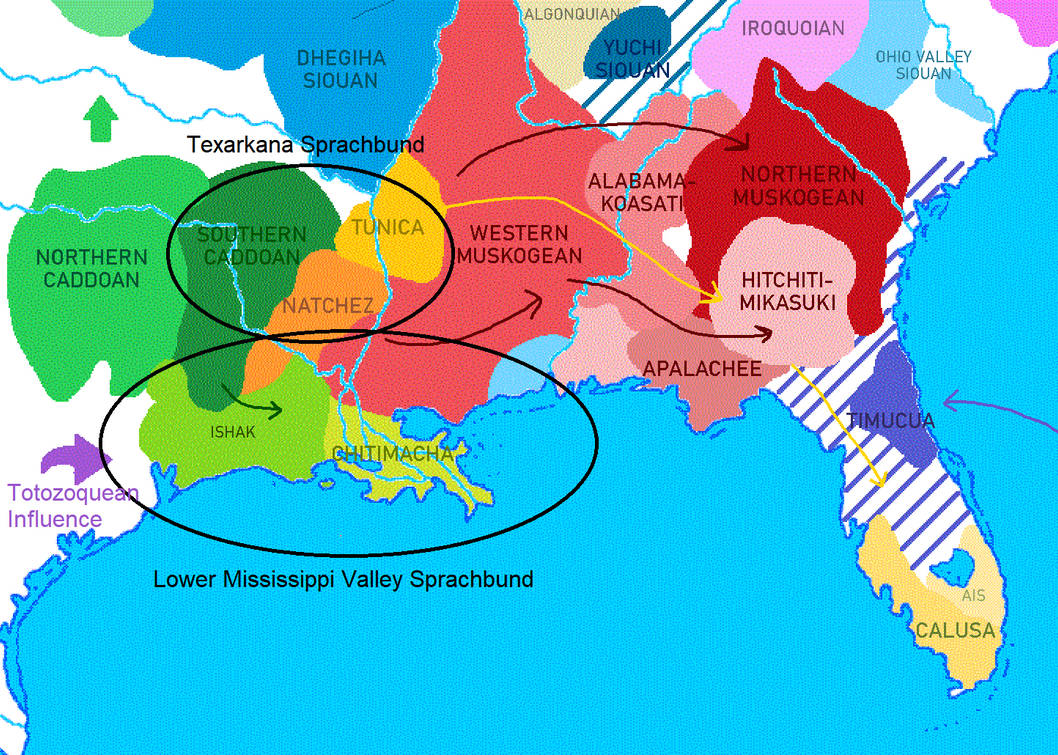Where Maps Become Footprints: An In-Depth Traveler’s Review of the Trail of Tears National Historic Trail
Embarking on a journey along the Trail of Tears National Historic Trail is not merely a hike through scenic landscapes; it is an immersive, profound engagement with one of the most significant, yet often overlooked, chapters in American history. This isn’t a review of a static museum exhibit or a singular historical marker, but an experiential review of a sprawling, multi-state "place" where the abstract lines of historical migration maps materialize beneath your feet. For the conscientious traveler seeking depth beyond surface-level attractions, this trail offers an unparalleled opportunity to walk through history, understand the human cost of forced migration, and witness the enduring resilience of the Southeastern Indigenous peoples.
The Trail of Tears National Historic Trail spans nine states – Alabama, Arkansas, Georgia, Illinois, Kentucky, Missouri, North Carolina, Oklahoma, and Tennessee – covering approximately 5,043 miles of land and water routes. It commemorates the forced removal of the Cherokee, Chickasaw, Choctaw, Creek, and Seminole nations (collectively known as the Five Civilized Tribes) from their ancestral homelands in the southeastern United United States to Indian Territory (present-day Oklahoma) during the 1830s. The "migration maps" that depict these routes, often seen in textbooks, transform into a living, breathing landscape here. Each segment of the trail, whether a preserved roadbed, a riverside path, or an interpretive center, serves as a waypoint on these sorrowful, yet incredibly resilient, journeys.
My recent experience traversing various segments of this monumental trail revealed a profound duality: breathtaking natural beauty juxtaposed with a history of immense suffering and injustice. This contrast is perhaps the most striking and emotionally impactful aspect of the journey. One moment, you might be captivated by the verdant rolling hills of North Georgia, the serene banks of the Tennessee River, or the stark, open plains of Oklahoma. The next, you are confronted with an interpretive panel detailing the thousands who perished from disease, starvation, and exposure, or the chilling accounts of families torn apart. It forces an immediate, visceral understanding of what those abstract "migration maps" truly meant for the people forced to walk them.

Navigating the Living Map: Key Segments and Interpretive Points
To truly appreciate the Trail of Tears, one must understand its distributed nature. It is not a single, continuous path easily hiked end-to-end. Instead, it’s a network of historic routes, modern roads, and interpretive sites. Planning is crucial. The National Park Service (NPS) website is an invaluable resource, offering detailed maps, driving directions to key sites, and information on what to expect.
One of the most powerful starting points is New Echota Historic Site in Calhoun, Georgia. This was the capital of the Cherokee Nation from 1825 to 1838 and is incredibly well-preserved. Here, you can walk through the council house, the print shop (where the Cherokee Phoenix newspaper was published), and the home of Elias Boudinot. It’s here that the Treaty of New Echota was signed by a minority faction of the Cherokee, leading to the justification for removal, despite the vast majority of the nation opposing it. Standing in these buildings, you grasp the sophisticated governance and vibrant culture that existed before the forced displacement. This site is a crucial "before" picture, making the "after" of the migration maps even more heartbreaking.
Moving west, Red Clay State Historic Park in Tennessee offers another vital perspective. This was the last seat of the Cherokee national government before the removal, hosting 11 general councils between 1832 and 1837. The sacred council spring and the replica of the council house provide a sense of the desperate attempts to resist removal. The quiet dignity of Red Clay, surrounded by native flora, underscores the deep spiritual connection the Cherokee had, and continue to have, with their ancestral lands.

Further along the path, sites like Portsmouth, Ohio (a critical point on the Ohio River water route), or various river crossings in Kentucky and Missouri, offer glimpses into the arduous river journeys undertaken by many. These segments highlight the logistical nightmares and environmental challenges faced by the forcibly removed, often packed onto steamboats or flatboats in inhumane conditions. The river itself becomes a flowing map, carrying stories of despair and resilience.
In Arkansas and Oklahoma, the trail becomes even more poignant as you approach the destination of "Indian Territory." Sites like the Fort Smith National Historic Site in Arkansas served as an administrative and judicial outpost on the frontier, processing many of the arriving nations. In Oklahoma, the end of the journey for many, there are numerous tribal cultural centers and museums, such as the Cherokee Heritage Center in Park Hill, which offer deep dives into the post-removal history, cultural revitalization, and the vibrant contemporary life of the Cherokee Nation. These centers are essential, demonstrating that the migration maps did not mark an end, but a devastating transition followed by enduring strength and cultural preservation.
The Landscape as Witness: Beauty, Reflection, and Solitude
What truly elevates the experience beyond a mere history lesson is the profound sense of place. The Trail of Tears passes through diverse ecosystems, from the Appalachian foothills to the plains. Walking a preserved segment, feeling the earth beneath your feet where thousands once walked, creates an undeniable connection to the past. The rustling leaves, the murmur of a distant creek, the wide-open sky – these natural elements become silent witnesses to the human drama that unfolded here.

The solitude found on many lesser-traveled segments encourages deep reflection. It’s a space to consider the profound injustice, the shattered lives, and the enduring strength of the human spirit. The beauty of the landscape can be jarring, a stark contrast to the suffering, yet it also reminds us of what was lost – ancestral lands teeming with life and deeply imbued with cultural significance. The "migration maps" not only show where people went, but also what they left behind: a rich, vibrant homeland.
The Maps Come Alive: Understanding the Geopolitics of Removal
The concept of "Southeastern Indigenous migration maps" extends beyond simple routes. These maps represent a complex geopolitical struggle. They illustrate the encroaching presence of European-American settlers, the insatiable demand for land (especially after the discovery of gold in Cherokee territory), and the federal government’s policy of "Indian Removal." When you stand on a preserved section of the trail, you are standing on a physical manifestation of these political decisions. The maps chart not just movement, but dispossession. They are maps of power, greed, and cultural clash.
The very act of traveling these routes, even by car to various sites, allows for a spatial understanding that a two-dimensional map cannot convey. You begin to grasp the sheer distances involved, the natural barriers overcome, and the vastness of the land claimed and then traversed under duress. The subtle changes in flora, geology, and climate across the nine states tell a story of distinct homelands and varied experiences of forced migration.
Practicalities for the Conscious Traveler
- Planning is Paramount: Given the trail’s length, decide which states or segments you want to explore. The NPS website (nps.gov/trte) is your best friend.
- Time of Year: Spring and fall offer the most pleasant weather for hiking and exploration. Summers can be hot and humid, especially in the Deep South. Winters can be cold and some sites might have reduced hours.
- What to Bring: Comfortable walking shoes, water, snacks, sunscreen, insect repellent, and a good map (physical or digital). Binoculars can enhance wildlife viewing.
- Respect and Reflection: Approach this journey with a spirit of humility and respect. Remember the sacred and sorrowful nature of these lands. Take time to read interpretive panels, visit museums, and allow yourself to feel the emotional weight of the history.
- Support Local and Indigenous Communities: Where possible, patronize local businesses and Indigenous-owned enterprises. Visit tribal cultural centers and museums, as they offer invaluable contemporary perspectives and ensure the continuity of cultural heritage.
- Safety: Some sections are remote. Inform someone of your plans, stick to marked trails, and be aware of local wildlife.

More Than a Path: A Journey of Education and Empathy
Visiting the Trail of Tears National Historic Trail is more than just a travel experience; it is an educational imperative. It challenges prevailing narratives of American expansion and forces a reckoning with a dark, yet foundational, aspect of the nation’s past. It fosters empathy for the struggles of Indigenous peoples, both historically and in the present day. The "migration maps" are not just historical artifacts; they are blueprints of a journey that continues to shape identity, culture, and the fight for justice today.
The resilience of the Cherokee, Choctaw, Chickasaw, Creek, and Seminole nations is a powerful counter-narrative to the tragedy. Their survival, their thriving cultures, and their continued advocacy are testaments to an unbreakable spirit. By walking in their footsteps, by understanding the maps of their forced migration, we not only honor their memory but also gain a deeper appreciation for their enduring contributions to the tapestry of American life.
This journey is not always easy. It can be emotionally taxing. But it is precisely this challenge that makes it so profoundly rewarding. It’s an opportunity to engage with history in a visceral way, to see the landscape through a different lens, and to emerge with a more nuanced, empathetic understanding of the past and its lingering echoes in the present. For the traveler who seeks meaning and transformation, the Trail of Tears National Historic Trail is an essential pilgrimage, a place where maps truly become footprints, etching indelible lessons onto the soul.
